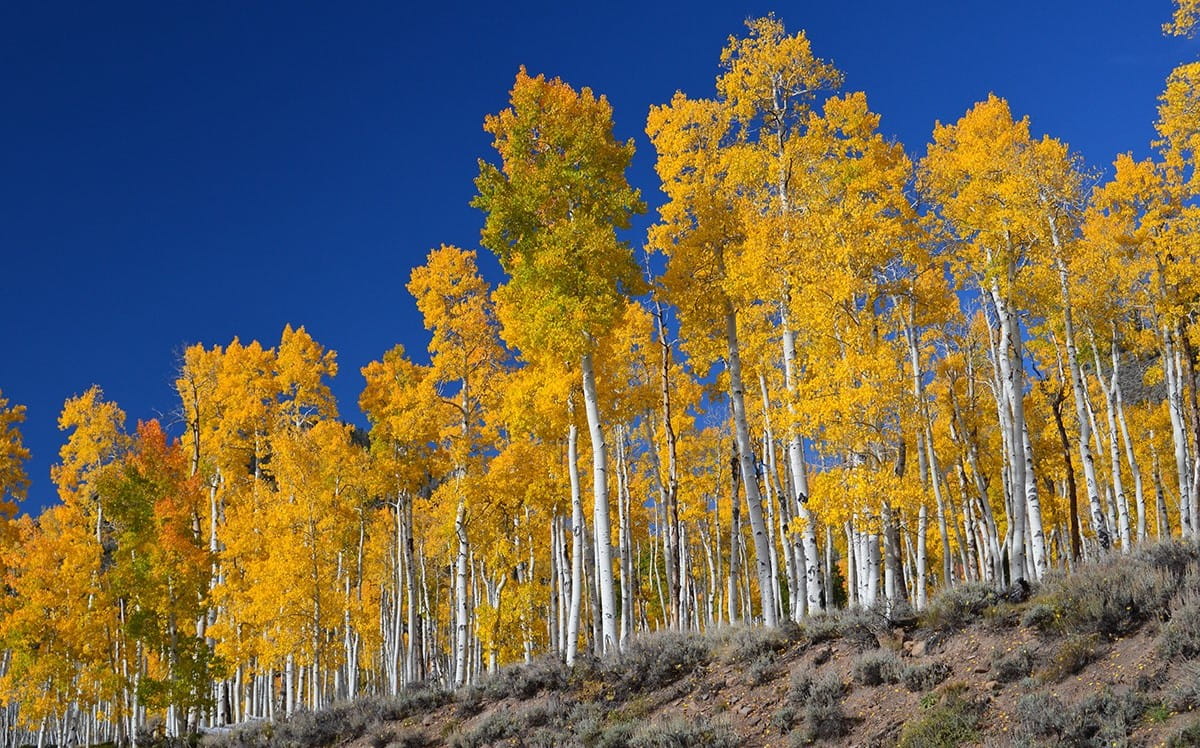
Aspen trees, also known as Populus tremuloides, are renowned for their striking beauty and unique characteristics. These iconic trees are not only visually captivating but also hold significant ecological and cultural importance. From their shimmering leaves to their interconnected root systems, aspens have fascinated nature enthusiasts and scientists alike for centuries. In this article, we will delve into 11 fascinating facts about aspen trees, shedding light on their remarkable features, ecological roles, and cultural significance. Whether you're a nature lover, a curious mind, or simply someone who appreciates the wonders of the natural world, these intriguing insights will deepen your understanding and appreciation of these majestic trees. So, let's embark on a journey through the enchanting realm of aspen trees and uncover the captivating secrets that make them such a beloved and integral part of our natural landscapes.
Key Takeaways:
- Aspen trees are not just individual trees; they are part of a massive organism known as a “clone,” making them one of the most extensive organisms on Earth. Their interconnected root system is truly remarkable!
- The leaves of the Aspen tree “quake” in the breeze, creating a mesmerizing sight and soothing sound in the forest. They also provide vital habitat for wildlife, making them essential for the survival of many forest creatures.
Aspen Trees: Nature's Quaking Giants
Did you know that the Aspen tree is not just a pretty face in the forest? Here are 11 fun facts about Aspen trees that will leave you in awe of these magnificent giants of the woods.
Aspen Trees Are Not Individual Trees
Aspen trees are not just individual trees; they are part of a massive organism known as a "clone." A single clone can cover a vast area, with each tree connected to the others through a shared root system. This makes the Aspen tree one of the most extensive organisms on Earth.
The Iconic Quaking Leaves
The leaves of the Aspen tree have a unique feature – they "quake" or tremble in the slightest breeze. This is due to the flattened petioles that allow the leaves to flutter and twist, creating a mesmerizing sight and soothing sound in the forest.
A Tree of Many Colors
During the fall, Aspen trees put on a breathtaking display of colors, ranging from vibrant yellows and oranges to rich golds and reds. This natural spectacle draws countless visitors to witness the stunning autumnal transformation.
A Haven for Wildlife
Aspen trees provide vital habitat for a diverse range of wildlife. From nesting birds to foraging deer and elk, these trees offer food, shelter, and nesting sites, making them essential for the survival of many forest creatures.
The Oldest Known Aspen Clone
The Pando clone, located in Utah, is estimated to be over 80,000 years old, making it one of the oldest living organisms on the planet. This massive grove of interconnected Aspen trees has captured the fascination of scientists and nature enthusiasts alike.
Resilient Survivors
Aspen trees have a remarkable ability to regenerate and thrive after disturbances such as forest fires or clear-cutting. Their root systems can send up new shoots, allowing them to rapidly colonize and rejuvenate damaged areas.
A Source of Medicinal Compounds
Aspen trees have been used in traditional medicine for centuries. The bark contains salicin, a compound with anti-inflammatory properties similar to aspirin. Native American tribes utilized Aspen bark to alleviate pain and reduce fever.
Cultural Significance
For many indigenous cultures, Aspen trees hold deep cultural and spiritual significance. They are often associated with wisdom, protection, and the cycle of life and death, playing a central role in folklore and traditional ceremonies.
Aspen Wood: Versatile and Valuable
The wood of the Aspen tree is prized for its versatility. It is used in crafting furniture, making paper, and even producing musical instruments such as guitars and drums. Its light color and smooth texture make it a favored material for various woodworking projects.
Environmental Stewards
Aspen trees play a crucial role in maintaining healthy ecosystems. Their presence helps regulate water flow, stabilize soils, and support biodiversity, making them indispensable environmental stewards in forested landscapes.
The Aspen tree, with its interconnected root systems, quaking leaves, and vibrant colors, stands as a symbol of resilience and interconnectedness in the natural world. These 11 fun facts about Aspen trees offer a glimpse into the remarkable attributes and ecological significance of these majestic forest inhabitants.
Conclusion
Aspen trees are not only visually stunning but also hold a wealth of fascinating characteristics. From their interconnected root systems to their shimmering leaves, these trees are a true marvel of nature. Their resilience in harsh environments and their role in supporting diverse ecosystems make them a vital component of many landscapes. Whether you're admiring their beauty in the fall or learning about their unique features, aspen trees continue to captivate and inspire nature enthusiasts around the world.
FAQs
Are aspen trees the same as birch trees?
No, aspen trees and birch trees belong to different botanical families. While they share some visual similarities, they have distinct characteristics, including differences in their bark, leaves, and growth habits.
Do aspen trees only grow in cold climates?
While aspen trees are commonly associated with colder regions, they can also thrive in diverse climates, including temperate and subarctic areas. Their adaptability allows them to flourish in a wide range of environmental conditions.
Was this page helpful?
Our commitment to delivering trustworthy and engaging content is at the heart of what we do. Each fact on our site is contributed by real users like you, bringing a wealth of diverse insights and information. To ensure the highest standards of accuracy and reliability, our dedicated editors meticulously review each submission. This process guarantees that the facts we share are not only fascinating but also credible. Trust in our commitment to quality and authenticity as you explore and learn with us.
